Views: 0 Author: Site Editor Publish Time: 2025-07-28 Origin: Site
Table Of Content
What Is A Thermoforming Vacuum Packaging Machine?
How Does A Thermoforming Vacuum Packaging Machine Work?
Components Of A Thermoforming Vacuum Packaging Machine
Types Of Thermoforming Vacuum Packaging Machine
Benefits Of A Thermoforming Vacuum Packaging Machine
Applications Of A Thermoforming Vacuum Packaging Machine
Key Factors To Consider When Choosing A Thermoforming Vacuum Packaging Machine
Maintenance Tips For Thermoforming Packaging Machines
The small-scale production model in the consumer society can no longer meet the growing market demand. Most food manufacturers need higher-capacity and higher-speed thermoforming packaging machines to increase packaging output. However, many current thermoforming packaging machine manufacturers' after-sales service and quality cannot meet the requirements. How to identify a suitable thermoforming packaging machine? Read on to have an overview of what to consider in an effective thermoforming packaging machine.
A thermoforming vacuum packaging machine, also known as a stretch film packaging machine, is a device to create vacuum-sealed packaging or modified atmosphere packaging (MAP). That is to say, it transforms plastic sheets into various sizes and shapes, including regular and irregular.
The machine uses pressure, heat, and vacuum to carry out the activities of thermoforming, material filling, vacuum sealing, inflation, and segmentation.
Our thermoforming vacuum packaging machine adopts upper and lower soft film packaging materials. The upper film uses composite film, while the lower film uses stretch film. During operation, the lower film reaches the temperature required for molding and softens it. The stretch base film is stretched and ready for rapid forming.
This is followed by automatically weighing and loading the product into the forming area. Then, it runs to the sealing mold, where the upper film is covered. Then, a vacuum is applied. For some products, nitrogen is injected after vacuuming to preserve the freshness of the products. Then, sealing is performed, and exhaust is carried out.
This machine can handle cross-cutting and longitudinal cutting. This helps to separate each product and get it ready for output.
The filling area of the forming chamber of the lower membrane receives the product ready to be packaged. The roll and film Roll Deviation and correction device detects and corrects any misalignment. The Vacuum Chamber removes the air to form a vacuum over the product and the packaging film. The Part Transverse Cutter and longitudinal cutter cut through the formed and sealed web to create sections of packages. The material output belt conveyor securely and efficiently carries them to packing or inspection stations. The Electric Waste Control Device collects waste film strips or excess cuttings and feeds them into a waste bin. The external vacuum pump creates the vacuum pressure required to seal and package in a reliable manner. The control panel gives operators real-time access to machine parameters, settings, diagnostics and process control to be adjusted.
Soft (flexible) Film Thermoforming Packaging Machine
The soft film is stretched into a soft three-dimensional bag. It is usually heated to make it soft, pliable, or moldable. Products are placed in the filling area. After passing through the sealing area, vacuuming or modified atmosphere treatment is carried out, and then the bag is sealed. Finally, the packaging is cut and the product is discharged for collection.
This gives airtight, hygienic, and personalized packaging to finished products.
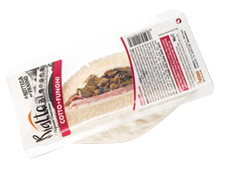
Hard (rigid) Film Thermoforming Packaging Machine
This machine heats a hard (rigid) plastic film until it becomes moldable. Then, it is stretched to form a tray. Products are then placed into the tray, and the interior of it is evacuated (vacuum) and inflated. Then, the top of it is sealed using a soft film. The last step is cutting and discharging to be collected.
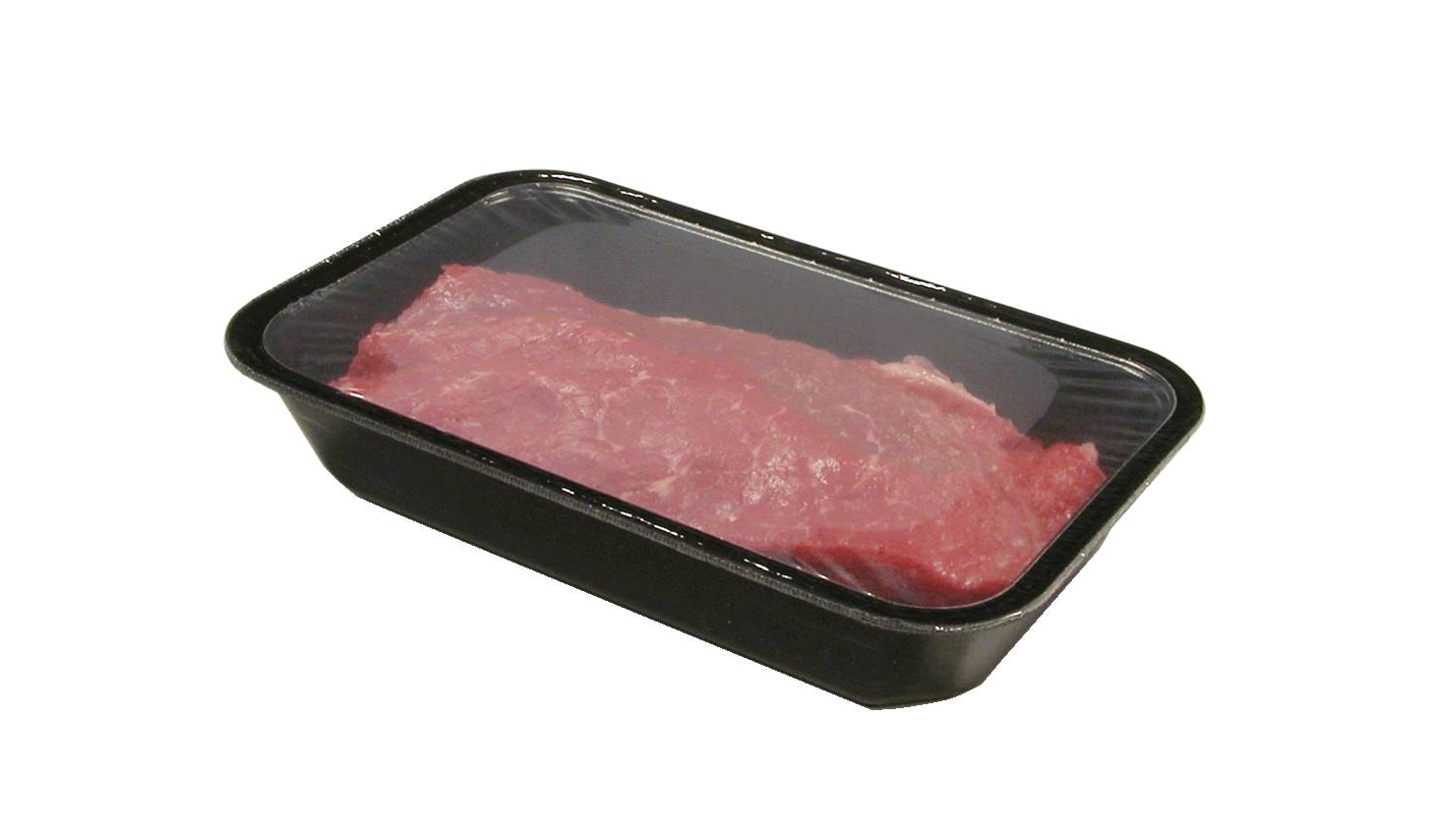
Aluminum Film Thermoforming Packaging Machine
The aluminum film, which is usually rolled, is heated to a soft state. The hot film is stretched and formed around a mold either by use of vacuum pressure or mechanical pressure. The products are inserted in the aluminum film trays either by hand or automatically and a lidding film (top lidding film) is then sealed on it to ensure protection of the product.
The package is then cooled after which it is trimmed or cut into a final shape.
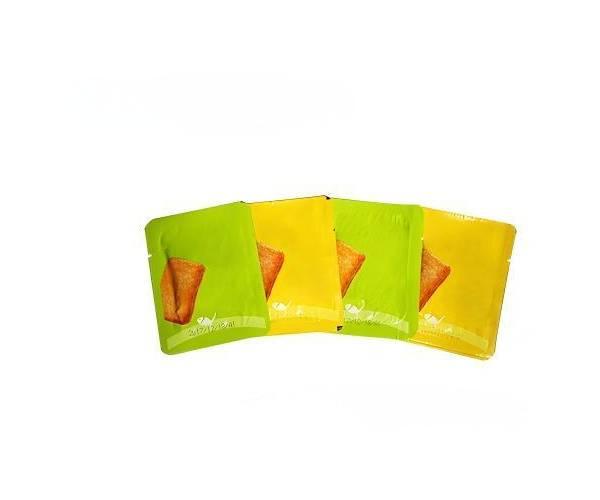
A thermoforming vacuum packaging machine works off a fully automated continuous flow system. It does not require constant stops and starts, so it allows continuous production. The machine performs a single synchronized process. This improves throughput by decreasing cycle times.
The machine is adaptable and can accommodate different ways of packaging, such as vacuum, MAP, and skin packaging. Vacuum removes air from the package, preventing it from contamination and spoilage, which in turn extends the product's shelf life. In modified atmosphere packaging (MAP), the same machine replaces air (oxygen) with gas mixtures, such as nitrogen or CO2. This will retard the growth of microbes and maintain the freshness of products such as perishable foods or bakery products. In skin packaging, products like prepared foods are placed in a tray. Afterwards, a transparent plastic film is placed on top of it to form a vacuum-sealed package which encloses the product.
The machine has a high initial cost but this translates to high returns on investment in the long run. Its full automation reduces the number of workers needed on the packaging line. Reducing errors would mean fewer down times, less waste and short production cycles. The cost is insignificant compared to the gain reaped in the long run due to less labor cost, improved productivity and efficiency. Depending on your production volume, you should be able to recover your investment in a few months to a couple of years.
The thermoforming vacuum packaging machines can be easily customized to suit your business needs. It can be customized to product size, sealing method, film type and other production requirements. Optional features include inflation, inkjet printing and labeling, customized cutting methods and extended length of the filling area.
Our automatic thermoforming vacuum packaging machine is made of food grade 304 stainless steel and high strength aluminum alloy, and the internal components are also made of well-known foreign brands. It is not easy to rust or corrode, strong and durable, with a long service life.
The food industry is one of the largest users of thermoforming vacuum packaging machines. It helps you undergo smart, intelligent packaging for freshness and safety. It also helps you conduct structural reforms to maintain product integrity and improve your consumer trust. For example:
Meat Product: Thermoforming vacuum packaging machines for meat use vacuum or modified atmosphere packaging (MAP) to preserve raw beef, beef jerky, fillets, steaks and poultry (turkey), sausages, minced meat, chicken breast and other meat products to isolate them from oxygen and prevent bacterial growth. In addition, it helps to maintain the color and freshness of meat.
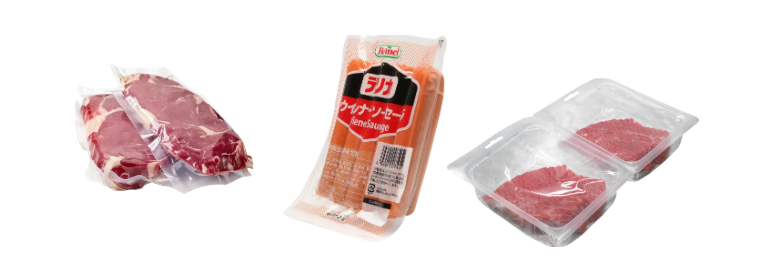
Seafood: Since seafood is perishable, food thermoforming vacuum packaging machines can be used to bulk package seafood such as fish, shrimp, sashimi, cod fillet and tuna. In order to keep it fresh during long-distance transportation, it is vacuum-packed and placed in a refrigerator, which can reduce space occupation and extend the shelf life.
Fresh Produce: Vacuum thermoforming packaging machines help to preserve moisture and prevent oxidation in fruit and vegetables like tomatoes, eggplant, corn, red pepper, lettuce, broccoli, radish, etc.
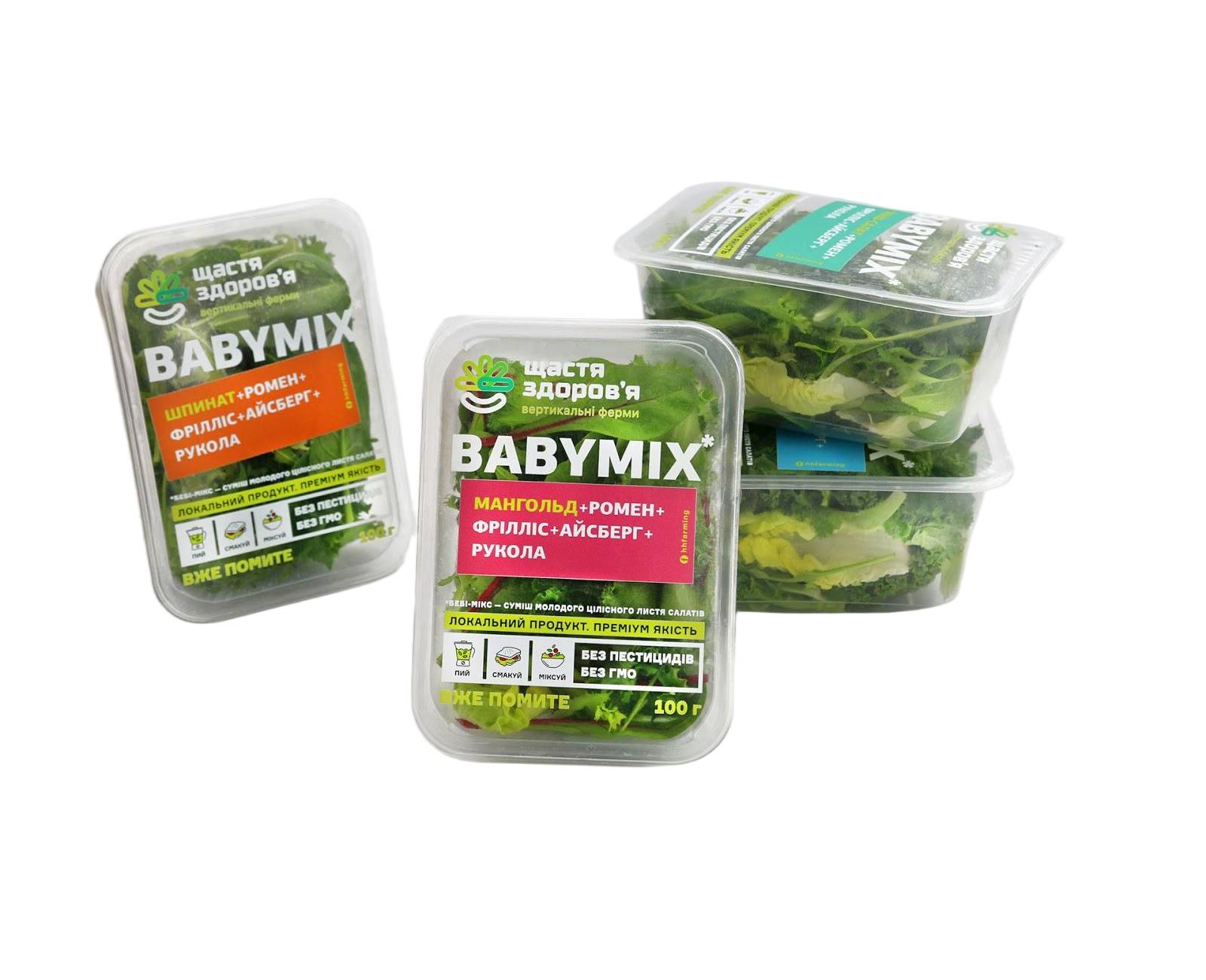
Dairy products: Dairy products like cheese, cream and butter are packaged in thermoforming packing machines. The packaging machine uses flexible or rigid films for vacuum packaging or tray packaging. The corresponding packaging method can be selected according to the shelf display requirements of different food manufacturers.

Ready meals: The machine is perfect for pre-cooked and fast-consumption foods like noodles, sandwiches, etc. Thermoforming and stretch film are used to customize the package presentation and shelf-life needs of the produts.
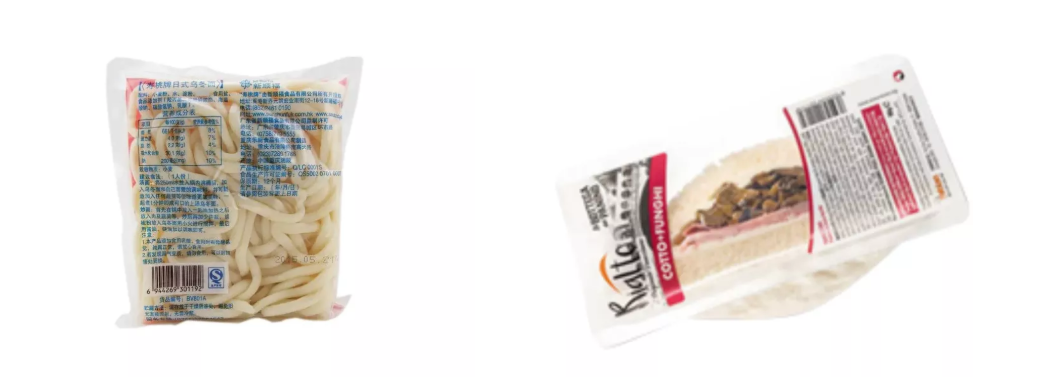
Bakery: Hard film stretching molding trays are used for packaging baked foods like bread, baguette, hamburger, cookies, etc. Since baked foods are fragile, this method can protect the food from being damaged by impacts.
This machine can provide a sterile packaging environment for medical supplies such as ampoules, medical paper and accessories, and is capable of mass production.
For products that require display-ready packaging, this machine provides secured packaging for electronics, hardware tools, etc. Furthermore, it provides product visibility and retail presentation, which supports your brand requirements.
Different product types have different packaging requirements. For cheese, sausage, sandwich, poultry and other materials, soft film thermoforming packaging machines are often used for vacuum skin packaging to better display the appearance of the materials. For salmon, steak and other materials, high-end supermarkets often use pallet stretch film machines for packaging, which not only better displays the appearance of the materials, but also can be better used for shelf display. In addition, different material sizes need to match different depths of molds and packaging display methods, so you need to provide this information so that we can better recommend models.
You need to consider the right film type for the product. Soft products such as cheese are best packed in flexible film. Medical supplies and electronics are supported by rigid film. Aluminum film offers high barrier protection for pharmaceutical products.
The upper and lower film should line up to ensure safe sealing and barrier protection. The top film will be transparent considering product visibility and branding. However, the lower film needs to have high thermoformability and seal strength. The typical materials are aluminum composite film, polyethylene (PE) and polyamide (PA).
Determine the film width by finding out the maximum package size and layout. The width of the bottom forming film and top sealing film is usually different.
Identify your packaging method. Several models of thermoforming packing machines are versatile, offering different packaging methods like Skin, vacuum, MAP, print or labeled packaging.
The speed requirement is dependent on your production volume. Semi-automatic machines might yield well in small volume production as they have low initial cost. A full automatic machine is ideal for large volume production to speed up the process and meet deadlines.
Modern vacuum packaging machines can be custom-made. For instance, there are integral die or split die options (rounded corners, hooks available). They also offer inkjet printing, labeling, easy-tear cut, die depth, chiller, accessories replacement, length, and width for custom shaping.
Hualian Machinery provides a variety of customized services to meet your business needs.
Determine the required space needed for the installation of your machine and the movement of your operators. Think about footprint in order to increase future upgrades to enhance smooth workflow.
Selecting an appropriate supplier of stretch film machines must be evaluated in various aspects. For example, after sales and technical services, a wealth of production experience, an effective R&D team, and provision of customized services.
The estimated price of a stretch film machine ranges from $20,000 to $70,000. The exact cost will depend on your assessment of your product requirements. You should also consider additional costs such as operational costs (energy, film usage, and maintenance).
Regularly lubricate and inspect the machine parts every day. Lubricate the bearings, belts, guides, rails, cam, and chain to avoid wear and tear. Check that the machine is working at the required temperature (10°C - 60°C) to avoid overheating or insufficient heating, as this could affect the product. Contact regions like the vacuum chamber should be cleaned daily.
Check the vacuum pump oil level and change the vacuum pump oil immediately if it turns black or milky white. It is recommended that you change the vacuum pump oil every 1500-2000 working hours.
Conduct a thorough and detailed cleaning to provide access to certain parts that cannot be reached through normal cleaning. Tighten up bolts, nuts, and screws to eliminate the possibility of loosening. Check the heating or cooling element to be in proper shape.
Carry out a comprehensive calibration of the machine every month. Temperature sensors needs to be calibrated to ensure successful and effective heating. Examine check molds and look out for wear and other damages which may develop. Check hoses, valves and cylinders for signs of damage.
A detailed check of the electric system should be done during quarterly maintenance. Replace damaged wires and ensure other electrical components are on track. Check the cooling system to see whether there is a leakage or any damage. Check that the coolant levels are adequate.
The machine is automatic and relies on up-to-date software and firmware to function. So review and upgrade versions to benefit from new features.
Conduct a thorough inspection of the entire machine once every year. This involves thorough examination of the electrical, hydraulic and mechanical systems. You should consider hiring the services of a professional technician for a thorough servicing.
Review production and maintenance logs to get the overall performance of the machine. Train operators, as this will minimize error and wastage.
Thermoforming vacuum packaging machines are powerful assets you can acquire to speed up your production line. Their productivity and multifunction are handy in different industries. Contact Hualian Machinery to discuss how to get started.
It should be inspected, cleaned, calibrated, and lubricated regularly to keep your machine in operation. Seek the help of professional technicians for technical support. Train operators in effective maintenance and troubleshooting.
To keep your thermoforming vacuum packaging machine working properly, you should check:
(1) electricity as the machine requires a 3-phase power supply. Make sure there is a stable electricity supply.
(2) air pressure no less than 0.6 MPa, and nominal air flow 1 m3/minute. Compressor air should be filtered to provide clean compressed air.
(3) cooling water, either clean running water or a water chiller.
You can find a vacuum packaging machine within the range of $20,000 - $70,000. Machine cost varies depending on your budget, the amount you need to produce, as well as the level of automation.
4. Are There Any Shortcomings Of The Thermoforming Packing Machine?
A full automatic machine has a higher upfront cost. It also has significant material waste from excess trimming. Others are inconsistent heating, mold defects, and the failure of the vacuum system. These issues can be solved with professional help.
What You Need to Know About Thermoforming Vacuum Packaging Machines
Top 5 Thermoforming Packaging Machine Manufacturers Worldwide
Top 10 Advantages of RTE Packaging for Consumers and Manufacturers
Starting a Pet Food Business: Choosing the Right Packaging Solutions
Seafood Packaging: Key Technologies for Freshness and Extended Shelf Life